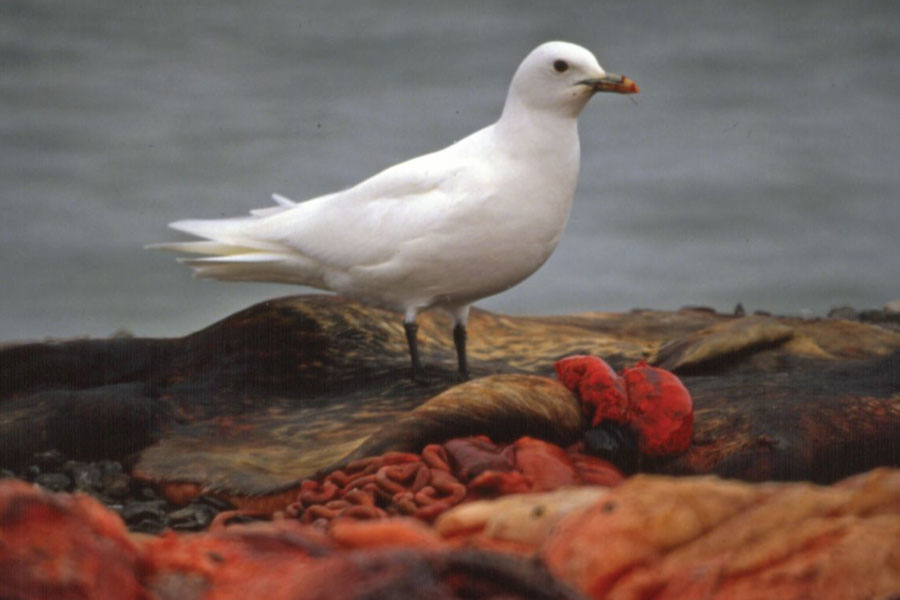U of S research measures mercury levels in declining bird species
Mercury from coal-burning power stations and other sources is suspected of contributing to quick drops in populations of endangered Arctic birds, according to new research conducted at the University of Saskatchewan.
By Michael Robin In a new paper published today in Proceedings of the Royal Society B, Alex Bond, former U of S post-doctoral fellow and his co-authors write that ivory gulls, top predators in the circumpolar North, have declined in number by more than 80 per cent since the 1980s. Only a few hundred pairs remain in Canada. One of the possible explanations for this decline is environmental contaminants. Notably, ivory gull eggs have the highest mercury content of any Arctic bird, with the Canadian gulls having the highest concentration across the entire species' range. This is likely because they scavenge marine animal carcasses, which are exposed to high levels of mercury.
In a new paper published today in Proceedings of the Royal Society B, Alex Bond, former U of S post-doctoral fellow and his co-authors write that ivory gulls, top predators in the circumpolar North, have declined in number by more than 80 per cent since the 1980s. Only a few hundred pairs remain in Canada. One of the possible explanations for this decline is environmental contaminants. Notably, ivory gull eggs have the highest mercury content of any Arctic bird, with the Canadian gulls having the highest concentration across the entire species' range. This is likely because they scavenge marine animal carcasses, which are exposed to high levels of mercury."Mercury is an increasing problem for Arctic wildlife as more is emitted by coal power stations and other anthropogenic means," said Bond, who completed the research with the U of S biology department and recently joined on with the UK-based Royal Society for the Protection of Birds.
"We wanted to see if the high mercury levels experienced by the gulls was a recent phenomenon, and possibly determine if it was linked to their decline over the past three decades."
The research team examined museum specimens of breast feathers, measuring the mercury burdens of 80 ivory gulls dating from 2007 to as far back as 1877. They found that, despite no changes in the gull's diet, methyl mercury concentrations were 45 times higher than 130 years ago.
"With mercury projected to continue increasing in the Arctic, this raises concerns for this endangered bird in Canada," said Bond.
The research group also included Brian Branfireun from Western University and Keith Hobson, an adjunct professor from the U of S Department of Biology working at Environment Canada's National Hydrology Research Centre in Saskatoon.
-30-
For more information:
Alex Bond
Senior Conservation Scientist, Royal Society for the Protection of Birds
alex.bond@rspb.org.uk
+44 (0) 1767 693432

